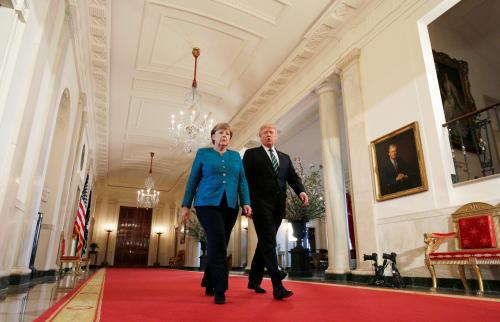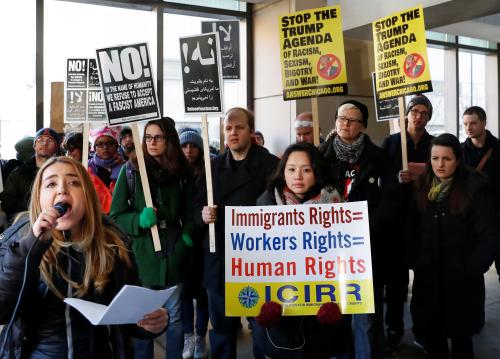Immigration issues and Mexico have once again become hot topics in the U.S. presidential race. And, emotions and drama often do “Trump” facts and analysis. Some crucial corrections are in order.
Fences won’t do
A border fence will not eliminate illegal immigration into the United States. Fences mostly redirect migration or change border-crossing patterns. For example, the Bill Clinton-era “Operation Gatekeeper,” which was designed to make it harder for immigrants to cross over into urban areas along the U.S.-Mexican border, moved the illegal traffic into the ecologically fragile remote areas of the southwestern desert. Even if a fence were constructed along the entire border, destroying in the process many fragile ecosystems with vulnerable species and creating intensely negative environmental consequences, people would find a way to get across.
Similarly, escapees from Eastern Europe during the Cold War found ways to breach the Iron Curtain. They surmounted its physical manifestation, the Berlin Wall, via balloons, homemade submersibles, and tunnels, in addition to trekking through Eastern Europe’s forests. Indeed, despite the draconian deterrent methods the Communist regimes employed—would-be escapees shot on sight if caught, families left behind subject to torture or deprived of economic and educational opportunities, captured escapees imprisoned or forced to labor in uranium mines—people still tried and got over the border.
Tunnels are already a key element of how drugs are smuggled into the United States—avoiding a much tighter and more secure border above ground. Smuggling by boats has also increased, and both would become methods of bringing migrants into the United States in response to further fencing off the border. Just like illegal cargo, undocumented workers would attempt to hide among and within goods transported through legal crossings.
The United States has already succeeded in tightening the border; what it has failed to do is to conduct effective immigration reform.
This does not mean that borders cannot be tightened. But the United States has already succeeded in tightening the border; what it has failed to do is to conduct effective immigration reform. Such reform needs to include expanded workers’ programs and greater visa opportunities, including for many jobs that U.S. citizens do not want to hold, such as boning fish.
During the presidency of George W. Bush, two factors significantly reduced illegal immigration. First, a recession cut jobs in construction and manufacturing, reducing opportunities. Second, more patrols and signal intelligence was deployed to the border, making illegal crossings harder. One unintended consequence of the tighter border was to compel those who succeeded to stay in the United States, instead of moving back and forth between Mexico (often to be with their families) and the United States.
Instead of cracking down on illegal workers through raids at the plants that hired them, the Obama administration targeted U.S. employers of undocumented workers, greatly expanding reporting requirements and investigations, while also stiffening penalties. And this significantly tightened the border, with further deployment of detection technologies. Illegal crossings declined dramatically. But Congress was unable to seize the opportunity to pass immigration reform.
The remittance and trade lifelines
A full-length fence along the Mexican border is estimated to costs some $285 billion; in other words, each U.S. taxpayer would have to pay around $900 in new taxes. Donald Trump proposes that “remittances derived from illegal wages” will pay for the costs of erecting the fence. They won’t. Even if there were a way to distinguish and trace legally and illegally-derived remittances (a very complex financial forensics task that remains elusive for banks in preventing money-laundering or terrorism financing) and legally seize them, the money would cover a tiny fraction of the fence’s cost.
Work remittances sent to Mexico from the United States were $20 billion to $25 billion per year during the George W. Bush and Barack Obama years. In 2014, Mexicans—including those living in the United States legally—sent home $23.6 billion. (The World Bank estimates that remittance flows from all developed countries to developing ones will be about $440 billion in 2015. Only on that scale do remittances approach the cost of the imagined fence.)
Remittances are a significant lifeline for many poor Mexicans. They allow families to remain in their home country and provide better health care and education for their children. In turn, this enables human and economic development and reduces further outmigration pressures.
Over the past decade, remittances from the United States have amounted to about 3 percent of Mexico’s GDP, being the 3rd largest source of foreign revenue after oil and tourism. Both the micro- and macro-economic significance of remittances to Mexico will likely continue to increase, as falling oil prices dramatically cut Mexico’s principal income source. For many poor Mexican families—who struggle to pay for basic items such as food, clothes, and heath care—remittances can represent 80 percent of income.
In addition to being the third largest U.S. trade partner (after China and Canada), Mexico is also the principal trading partner for at least 20 U.S. states. Travel and trade across the border are a way of life for border communities. These family ties and economic networks are reaching deeper into the United States. According to a recent fact sheet issued by the Mexican government, the 33 million people of Mexican origin in the United States account for eight percent of U.S. gross domestic product. Moreover, there are more than 2 million Hispanic entrepreneurs in the United States. The border thus needs to remain not a separating line, but a connective membrane.
The dangers of loose talk
The vast majority of border crossers, including illegal ones, are not drug traffickers, gang members, murderers, or rapists. Indeed, it is remarkable that despite extraordinary and escalating criminal violence in Mexico since 2006, violent crime rates have been steadily falling in the United States (with exceptions, including Chicago). Violence from Mexico has not spilled into the United States, even though Mexican drug trafficking groups are the dominant suppliers of illegal drugs in the United States.
An antagonistic U.S.-Mexico relationship would not alleviate crime problems in either country. In fact for a decade, the two countries have embraced the principle of joint responsibility, with the United States recognizing that Americans’ demands for drugs—and illegal weapons flows into Mexico—contribute to the problem. The two countries must cooperate in order to tackle organized and disorganized crime.
Good fences make good neighbors, and bad fences make bad ones. Presidential candidates risk alienating even the fenced-in communities when they offer drastic proposals for stemming migration. As Robert Frost reminds us: “Something there is that doesn’t love a wall.”



Commentary
Something there is that doesn’t love a wall: Mexico and the U.S. presidential campaign
September 15, 2015